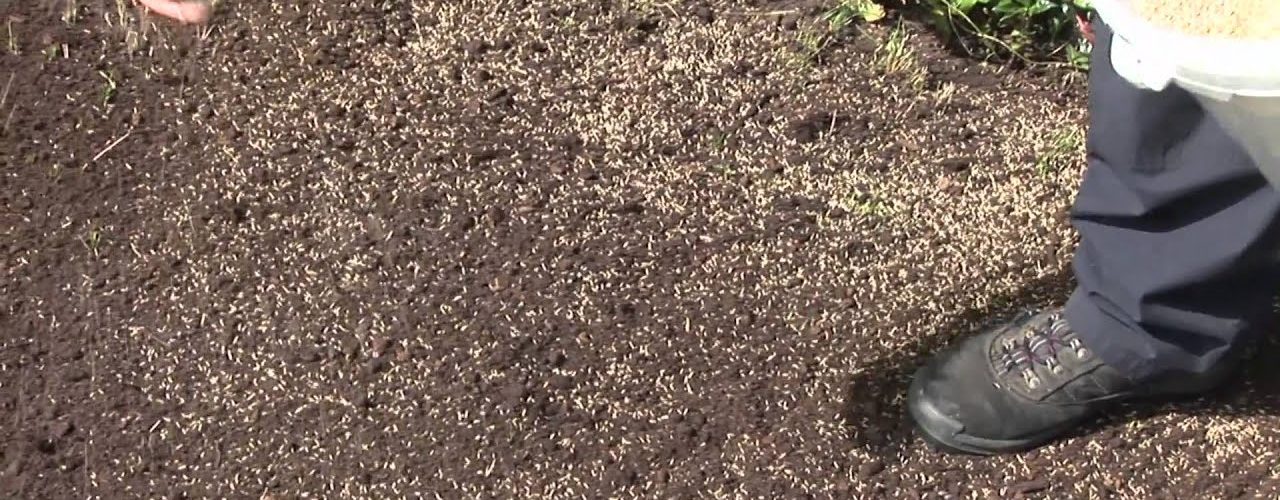Whether you’re just improving your lawn or starting from scratch, you need be familiar with some basic information to plant grass successfully. Simply put, you need to know how to seed grass. Follow these steps and tips to get the green and thriving lawn you want.
Contents [hide]
1. Select Your Grass
The first step is to decide what kind of grass you want to plant. There are two basic categories to choose from, cool and warm season grasses. Cool season grasses, such as Fescue and Kentucky Bluegrass, must be planted in the early season or fall. Warm season grasses such as Bermuda and St. Augustine have to be planted in late spring or early summer. Zoysia is a warm season grass that has some tolerance for cold temperatures. If you’re planting to fill in patches you’ll also want the new grass to match the existing variety. If you’re unsure what type of grass you already have, take a small patch of it into a gardening or landscaping store and ask them. Also, for help finding the right type of grass visit Lawngrasses.com.
2. Get Soil, Composts and Fertilizers
The next step is to address the soil issue. If you want to get really scientific, you can get a soil testing kit or have a lab test the soil for required nutrients and its Ph level. Again you can check at stores to see what soils and/or fertilizers are recommended. For some further information on soil testing you can also check out the LoveToKnow.com article on the subject. Many people don’t get this detailed, however. Usually just some good bagged topsoil and compost/peat moss works fine. These may be sold pre-mixed in a bag, or you can buy them separately and mix them in as you till and as a top coat.
3. Rake and Till Soil
If you’re filling in patches in an existing lawn, mow the lawn first and then loosen up the soil in the patches with a rake. In general try to get down about 3 to 6 inches. Some areas with thin grass or near roots and rocks you may not be able to do so thoroughly, which is ok – you can just loosen them a bit and you will be able to just sprinkle seeds and then dirt over these areas later. But when possible, turn the dirt over and make sure it’s well loosened, not just scraped. If you’re planting a whole new lawn on a dirt plot, turn over the entire area. A good method is to rake and till it from different directions to make sure you do a thorough, even job.
4. Mix in Fill Dirt/Compost Mix
Now it’s time to mix in the dirt and compost you’ve bought. If you did run a soil test and a fertilizer was recommended, add that as well. Mix all of these components together with the tilled soil with your rake or hoe.
5. Seed
Now its time to seed the grass. Simply sprinkle your seeds on the tilled areas. Don’t pile it up too much, but make sure the ground is thoroughly covered. There are mechanical and power spreaders that do a good job, but your hand or shovel is alright too as long as you pay attention to spreading it evenly.
After you’re done sprinkling/spreading the seeds, cover the seeds with about ¼ inch of dirt – preferably the same soil and compost mixture you used before. It’s also acceptable to just till the seeds into the soil mixture with the rake, but adding fill dirt over them makes it more certain that all the seeds will be covered. It also works better in patches and thin grass areas. Or you can do both – spread and mix the seeds a bit and then sprinkle a top coat of dirt/compost.
6. Water and Maintain Moisture
At this stage many people cover the planted areas with hay or straw to retain moisture, which works well. The main point is for the area to stay moist but not soaked. Either set up a sprinkler system or water it often with a hose – on hot, sunny days as often as every 2 hours or so may be necessary. Not only the surface needs to stay moist but a few inches down into the ground as well. If you’re hand watering it that may mean watering it for around 5 to 10 minutes each time. With sprinkler systems, care needs to be taken that the ground doesn’t become puddled and soggy, so time them accordingly.
7. Check and Reseed if Necessary
This general watering regime should be kept up for anywhere from 2 weeks to a month, at which point your will begin to see new grass growth. Once you do see the new grass popping up, you can reduce the watering somewhat, but don’t stop it entirely. Water it at least every other day. If you see bare spots on an existing or new lawn, simply replant seeds in these spots using the same techniques as outlined above.
Follow these tips and you pretty much can’t go wrong. When you’re finished you’ll have fresh green grass that delights you and possibly becomes the envy of your neighbors. Try to get started as early as is appropriate for your grass type, so that by summer or fall you’ll have a wonderful lawn for all your outdoor activities.



